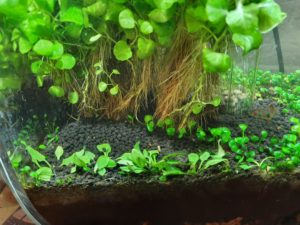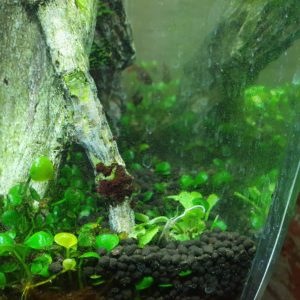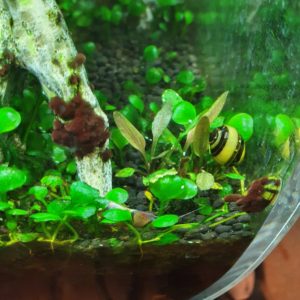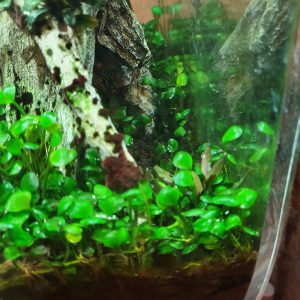It’s been seventeen weeks since the Cryptocoryne lutea ‘Hobbit’ was planted so it’s time to take a look at how the emersed growth form from the shop compares to the submerged growth form in the tank.
Aquarium plants for commercial sale are, for economic reasons, almost exclusively grown “emersed” – the roots of the plant and whatever media they are planted in is kept submerged underwater in the nursery but the leafy part of the plant is grown in the open air. There is a massive difference to the plant, however, in growing with leaves in the open air vs. leaves that are always submerged underwater, and so plants will very often have a different form of leaf, sometimes dramatically different, after they get established in the aquarium. You can see the effect in the Fireplace Aquarium with e.g. ludwigia and lobelia and now here we see it with the Cryptocoryne lutea ‘Hobbit’.
The emersed form from the shop has bright green, rounded leaves that tend to lay down towards the substrate. The submerged form leaf, at least so far in the Fireplace Aquarium shown in the pictures above, is a pointed ovoid more upright shape and is olive or brownish in colour. Often with cryptocoryne the emersed-form leaves will ‘melt’ or turn to mush and rot after submersion, but that hasn’t happened here. The six week timing for the plant to convert over from emersed to submerged growth is pretty typical although this can vary widely.
Cryptocoryne planting “pro tip” from Tropica
Jurijs Jutjajevs from Tropica has a “pro tip” for how to prevent cryptocoryne from melting and encouraging a faster transition to submerged growth… just before planting you cut off all the emersed form leaves! I wasn’t brave enough to try it this time…





